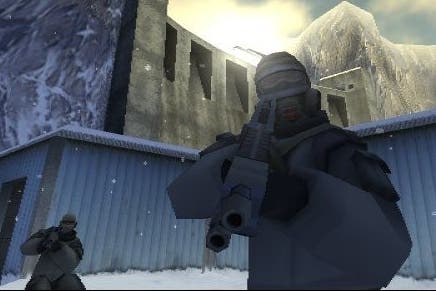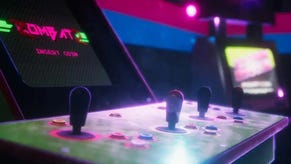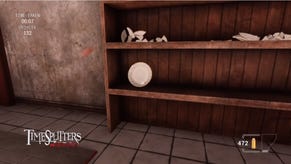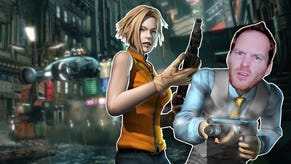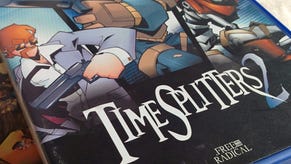TimeSplitters 2 retrospective
If I could turn back time...
You know what first-person shooters need? Monkeys. We had them, once upon a time, but the cruel tide of fate snatched them from our fingers and replaced them with stoic blood-stained warriors, all knotted jaws and angry scowls.
It's 2002, and the world is going gaga over this new game from Microsoft - Microsoft! - for something called the Xbox. It's Halo, and it will go on to be widely credited with entrenching the first-person shooter as the genre of choice for console blockbusters. Out go colourful platforming mascots, in come assault rifles and sticky grenades. And, fair play to Bungie, what Master Chief brought to the table was pretty spectacular. It just wasn't a patch on the real best shooter of the era. That, of course, would be TimeSplitters 2.
Like the first game in this sadly short-lived series, TimeSplitters 2 was the work of Free Radical, the Midlands-based studio founded by many of the team members who worked on Rare's seminal GoldenEye and Perfect Dark, the previous benchmarks for console shooter excellence. Timesplitters picked up their baton with aplomb, mixing smart objective-based gameplay with compelling interactive environments, and sprinkling inventive weaponry and no small amount of humour on top.
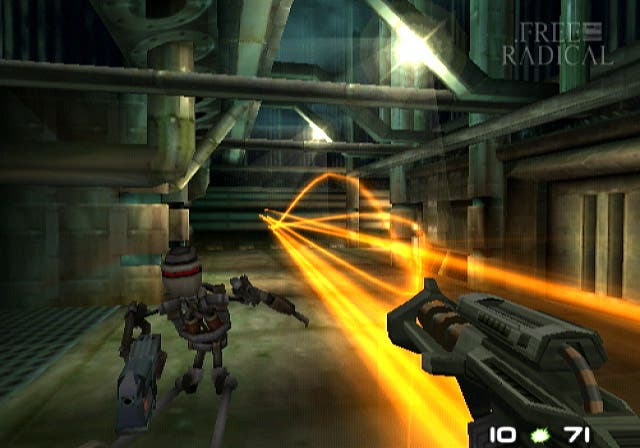
The connection is most keenly felt in the opening level of TimeSplitters 2, which deliberately echoes the first stage of GoldenEye. You're once again assaulting a Russian dam, but this time your goal is rathjer different to the one undertaken by 007.
You're on the trail of the titular TimeSplitters, a time-travelling alien species that is flitting throughout human history, wreaking havoc. Your job is to battle through ten timezones, find the Time Crystal that is allowing the creatures to do their dirty work, and then escape. In the first level, that means a jaunt to Siberia in 1990, where excavations under a military controlled dam have unearthed something weird.
You know a game has something special when the minute-by-minute play experience is seared into your brain. For me, the Siberia level of TimeSplitters 2 is one of those experiences. It was this level that formed the playable demo of the game, given away on the cover disc of the Official PlayStation Magazine, and, my god, how I loved it. I replayed it over and over, finding the perfect route through, hitting every headshot, unearthing every secret, completing every objective. Even before the game was out, I knew that level like the back of my hand, and returning to it in 2013, from a disc so scuffed that the music doesn't even play properly, it all comes back to me. The muscle memory is still burned in there. And it's still brilliant.
This is a linear game, but one that still manages to keep changing. There are sizable sections where you explore more than you shoot, moments of gentle puzzling and plenty of things that only become apparent after multiple playthroughs. TimeSplitters 2 still has the playfulness that the very early shooters offered, the sort of weird little touches that made Duke Nukem 3D such a standout. Almost every shelf in the Siberia level has watermelons on it. In fact, watermelons keep cropping up throughout the game. Why? Because it's fun to shoot watermelons, duh.
And the inspirations went deeper than that. Playing on different difficulty settings actually changed the game. Imagine that! It didn't just make enemies kill you with one hit, it meant more objectives to complete, more areas of the map you could access, more weapons to find.
With each of the campaign's stages taking place in a different time period, there's none of the weary familiarity that blights today's FPS titans. The game is free to play with gangster, cowboy and even horror tropes as you battle through 1930s Chicago, the Wild West, Aztec ruins and Notre Dame cathedral. Admittedly, there are also plenty of more sci-fi tinged stages that are less unique, but there's variety here that the genre has sadly lost.
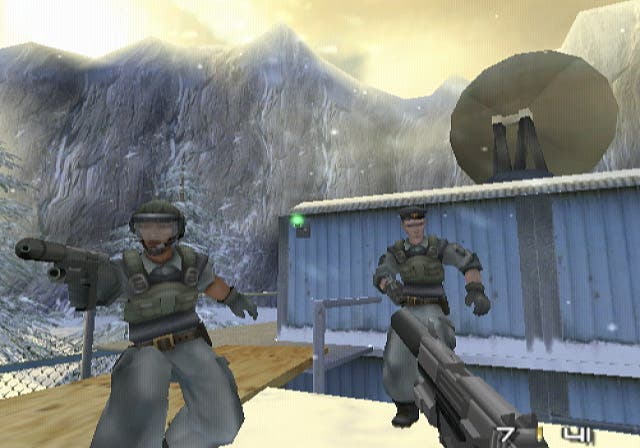
It's an obscenely generous game, with two-player co-op available throughout the campaign, a robust map editor that can be used to create single-player story missions and competitive arenas alike, and no less than 16 multiplayer modes. They were really good ones as well. It's another area where modern FPS design seems to have calcified around the same ideas, so to replay a game with modes like Shrink, where players literally get smaller as they slip down the leaderboard, is an absolute joy. It's also here that the monkeys come into play, with modes like Monkey Assistant helping out the lowest ranked player by teaming them up with a gang of armed simians.
This silliness can't be understated. The game isn't wacky or even trying to be funny, it's just comfortable enough in its own oddball world - helped along by a distinctive graphical style that is just cartoony enough to take the edge off the violence - that it's able to indulge in an "anything goes" approach to design.
It just wasn't to last. Played today, the TimeSplitters 2 control map just feels weird, with floaty aiming and outdated button mapping. Whichever of the layouts you choose, crouching and sprinting always feel like they're in the wrong place, and the way you have to aim to the sides of the screen to rotate the view is downright bizarre to today's eyes. There's no radar, no handy hit indicator to show you where an enemy is shooting from. Years of joypad dogma have taught us to expect every shooter to control the same way, and going back to TimeSplitters is a lot like trying to unpeel Shakespeare: though the words are familiar, their structure and usage feel alien.
It was also a game with no defining character to build a fanbase around. The nominal heroes were Sergeant Cortez and Corporal Hart but they were almost entirely abstract. More damagingly, the game's multiplayer was offline only, playable in split screen or by linking consoles together. It was a system that made GoldenEye a classic, but with Xbox Live and the nascent PlayStation Network ushering in the online future it's an omission that allowed the game to be overtaken by Master Chief and pals.
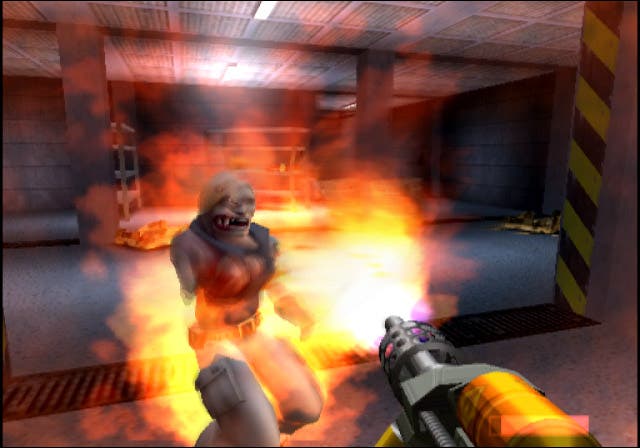
It's especially interesting to revisit TimeSplitters 2 today, when the FPS has gone from console curiosity to industry behemoth. Quirky and characterful, it feels like an evolutionary detour, the road not travelled, and I think we're all poorer for that. With Halo leading the charge, both gamers and industry alike were already heading in a different direction. Games became serious business, and shooters the most serious of them all - a future of dour, bloody corridors lay ahead, and the prospect of melon-wielding monkeys just didn't sit right in such company.
TimeSplitters: Future Imperfect followed in 2006, but by that point it was so out of step with mainstream tastes that it sank almost without trace. Free Radical was reduced to jumping aboard the gritty bandwagon with the long-delayed and poorly received PlayStation 3 exclusive Haze.
It's especially interesting to look back at TimeSplitters 2 in the midst of all the hype and hullabaloo surrounding another new hardware generation. The next gen shooters are all slinky and glossy and boast detailed violence the likes of which we could only imagine in 2002. As generic as they are, they're good games and polished products. But they're not TimeSplitters. They're not weird, they're not offbeat. Today's shooters are creatively trapped, hiding their idiosyncracies behind walls of teal and beige, where the only primary colour is blood red, scared to be daft lest a little humour drives away the supposed hardcore who count success by the height of your arterial spray.
Rumours of a fourth TimeSplitters game resurface every now and then, but the word from the studio that was Free Radical - now Crytek UK - is that there's no market for it any more. That may, sadly, be true. But if TimeSplitters isn't the shooter that today's gamers want, it's almost certainly the shooter they need.
